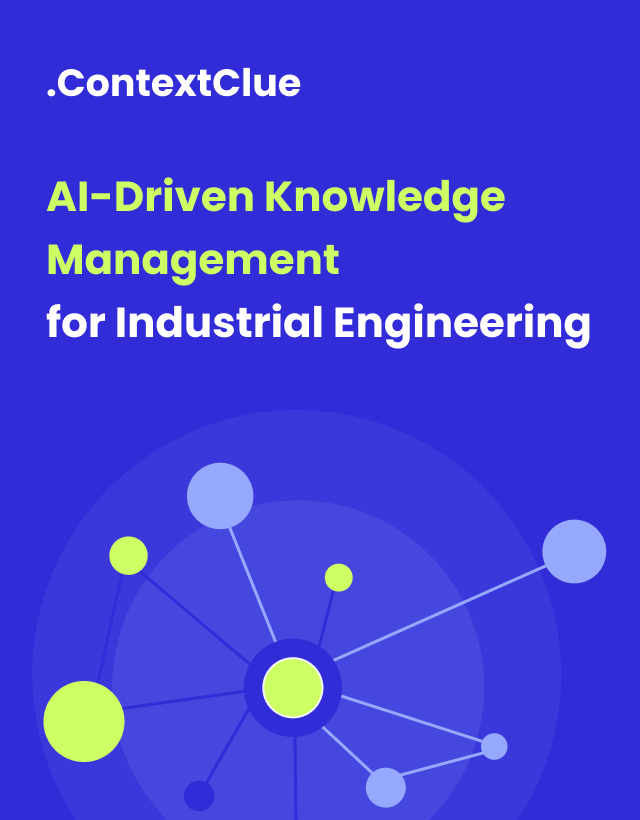
At a busy airport, turning around an aircraft – the time between its arrival at a stand and its next departure – is a fast-paced, carefully coordinated process. In a short span, ground crews must unload baggage, clean the cabin, refuel, restock supplies, and board new passengers. Every task depends on the others, and a delay in just one can ripple through the entire schedule, affecting flights across the airport.
Managing aircraft stands adds to the complexity. Stands are assigned based on planned arrival and departure times, but delays often cause aircraft to overstay, forcing incoming flights to wait—even when some stands appear unused. The real difficulty lies in predicting when a stand will actually become available, as real-time conditions on the ground are constantly changing. With hundreds of aircraft moving through daily, even small errors in timing can quickly escalate into widespread disruptions.
Meet Our Client
Our client is a dynamic international technology company that develops advanced solutions designed specifically for airports worldwide. Through our long-standing collaboration, we've successfully delivered numerous large-scale projects together and developed an extensive portfolio of Proof of Concepts (PoCs) that demonstrate innovative technologies for the aviation industry.
Our partnership combines their global expertise with our implementation experience, consistently delivering effective systems that enhance operational efficiency, passenger experience, and safety across international airports.
Case Study Shortcut
Challenge
Aircraft turnaround optimization
Efficiently managing aircraft turnaround times is critical to minimizing delays and optimizing airport operations.
Task coordination challenges
Complex interplay of tasks like unloading, cleaning, refueling, and boarding within tight timelines.
Stand occupancy issues
Stand occupancy delays, leading to queuing and operational bottlenecks.
Goal
The primary objective was to optimize aircraft stand utilization to enhance overall airport efficiency, directly impacting flight punctuality, airline profitability, and passenger satisfaction. By providing accurate, real-time predictions of stand clearance, the system aimed to transform reactive chaos into controlled, efficient management.
- Improve flight punctuality and reduce delays
- Increase airline profitability through streamlined operations
- Enhance passenger satisfaction with smoother travel experiences
Outcome
The project delivered a highly effective, cost-efficient AI solution that prioritized operational value over technical complexity. It achieved comparable accuracy to advanced models at a fraction of the cost, focusing on classical algorithms and domain-driven features while maintaining high predictive performance.
Before
- Reactive response to delays
- Manual monitoring of stand clearance
- Cascading delays from operational bottlenecks
- Limited operational visibility
After
- Proactive prediction
- Automated real-time predictions every minute
- Prevention of bottlenecks before they happen
- Real-time dashboard for operators

Integrate those solutions in your company
Case Study Details
Approach
Real-time turnaround monitoring
- The system continuously ingests live operational data - such as flight status, gate assignments, and aircraft services - to track the turnaround process as it unfolds.
Stand clearance time prediction
- Using a machine learning pipeline, the system predicts when each aircraft stand will become available. These predictions are refreshed every minute to reflect the latest operational context.
Dashboard for decision support
- An intuitive, operator-facing dashboard presents real-time predictions and key metrics, allowing ground controllers to make informed decisions about aircraft stand assignments and resource allocation.
Built on Databricks
- The platform leverages Databricks for scalable data processing, model training, and seamless integration with existing airport systems.
Streaming data pipeline
- The system ingests and processes real-time data from multiple sources, ensuring up-to-date predictions at all times.
Model strategy: Simplicity with domain intelligence
- Instead of relying on complex deep learning models, the team used classical statistical algorithms enhanced by domain knowledge. This approach reduced computational costs and complexity while improving prediction accuracy.
Timeline
Discovery & Strategic Planning | 2-3 weeks
Operational Analysis
Comprehensive assessment of current turnaround processes and operational pain points
Stakeholder Engagement
Intensive collaboration with airport operations staff to understand real-world constraints
Expert Knowledge Capture
Deep-dive workshops to identify what truly drives turnaround times
Technical Architecture Planning
System design incorporating Databricks infrastructure and real-time processing requirements
Data Pipeline & Feature Engineering | 3 weeks
Data Infrastructure Development
Building robust streaming data ingestion from airport systems
Domain-Enriched Feature Design
Creating features rooted in operator intuition and experience
Algorithm Selection Strategy
Systematic evaluation of classical vs. advanced modeling approaches
Cost-Benefit Analysis
Rigorous assessment of computational resources vs. accuracy gains
Model Development & Validation | 3-4 weeks
Predictive Model Building
Developing models using classical statistical algorithms enhanced with domain expertise
Performance Testing
Comprehensive validation against historical data and operational scenarios
Key Insights Discovery
Identifying primary predictive variables (airport congestion patterns)
System Integration
Connecting models with existing airport systems and Databricks platform
Deployment & Operational Integration | 2 weeks
Real-Time Implementation
Configuring minute-by-minute prediction refreshes and dashboard deployment
Technology

Databricks
Our team

Jakub Berezowski
Data Scientist

Marcin Marczyk
Delivery Director

Mateusz Kijewski
Data Engineer
Our Team Expert Opinion

We deliberately chose simplicity over complexity in selecting algorithms, as it turned out that classical, we can say even old-school statistical algorithms, when applied well, deliver matching results at a fraction of the cost compared to the state-of-the-art ones
Jakub Berezowski Data Scientist at Addepto

Take the next step
About Addepto
Addepto, a fast-paced, growing company focused on innovations in AI-related and data-oriented areas, supports digital transformation at companies working on electronics manufacturing services.
Here you can learn more about the technologies used in this project:
We help them find ways to use their data effectively with data lakes, data platforms, data engineering and so on.
About us

We are recognized as one of the best AI, BI, and Big Data consultants
We helped multiple companies achieve their goals, but - instead of making hollow marketing claims here - we encourage you to check our Clutch scoring.












Transform Engineering Chaos into Strategic Clarity
Discover how AI turns CAD files, ERP data, and planning exports into structured knowledge graphs-ready for queries in engineering and digital twin operations.
read more


